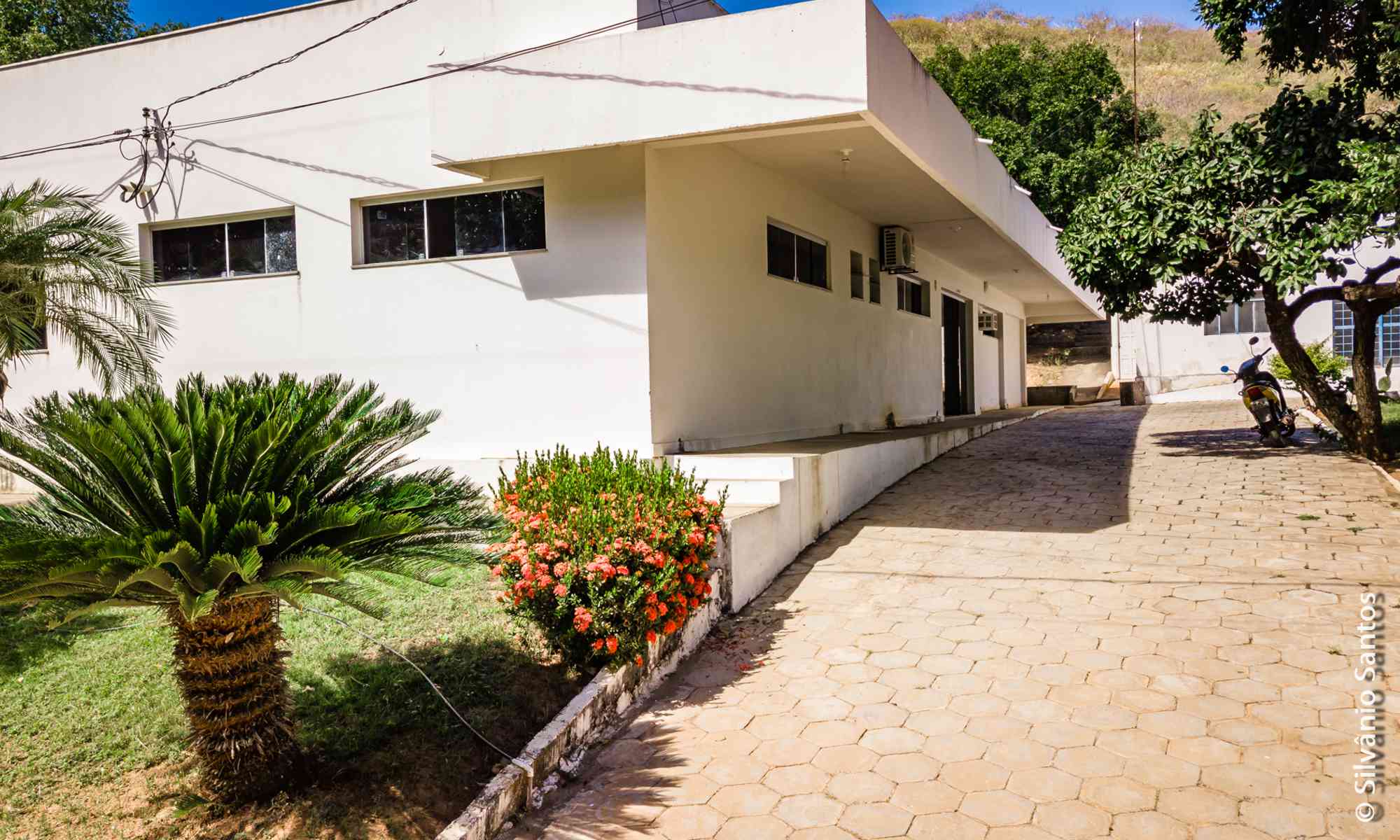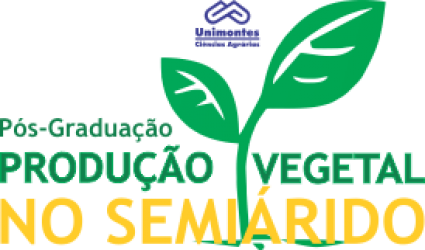- Version
- Download 21
- Tamanho do Arquivo 2.60 MB
- Data de Criação 14/06/2021
- Download
SOUZA, Suzane Ariádina de. Diversidade de bactérias endofíticas em bananeiras ‘Prata-Anã’. 2011. 101 p. Dissertação (Mestrado em Produção Vegetal no Semiárido) – Universidade Estadual de Montes Claros, Janaúba, 2011.
A bananeira (Musa spp.) é uma das fruteiras mais cultivadas em todo território nacional. Esta cultura, assim como outras plantas, está associada a microrganismos, que podem trazer benefícios às mesmas. Dentre estes, estão às bactérias endofíticas, que habitam o interior de tecidos e órgãos vegetais sem causar prejuízos ao seu hospedeiro e sem produzir estruturas externas emergindo dos tecidos vegetais. A diversidade de microrganismos endófitos têm sido avaliada em muitas plantas, mas em banana, pouco se sabe sobre esta relação. Os objetivos do presente trabalho foram acessar a diversidade genética e identificar em nível de espécie as bactérias endofíticas presentes em raízes de bananeira ‘Prata-Anã’, por meio do uso de marcadores moleculares. O trabalho foi conduzido nos laboratórios de Fitopatologia e Biotecnologia do Campus Janaúba da Universidade Estadual de Montes Claros. Foram utilizados fragmentos de raízes de banana ‘Prata-Anã’, provenientes de quatro municípios do Norte de Minas Gerais e um da Bahia. Foi realizada uma desinfestação das raízes para isolamento das bactérias endofíticas. Os isolados bacterianos obtidos foram caracterizados com relação à resposta de Gram, e a patogenicidade foi testada pela reação de hipersensibilidade em plantas não hospedeiras, sendo usadas mudas de pimentão, feijão e fumo. A diversidade genética foi verificada utilizando as técnicas rep-PCR e ARDRA. Foram selecionados isolados pela presença do gene nifH. A identificação em níveis de gênero e espécie foi realizada por meio do sequenciamento parcial da região rDNA 16S. Foram isoladas 201 bactérias endofíticas, destas 151 foram classificadas como Gram- positivas e 50 como Gram-negativas. Nenhuma apresentou reação de hipersensibilidade nas plantas testadas. A técnica rep-PCR gerou, para cada primer: REP, ERIC e BOX, separadamente, perfis moleculares diferentes. Foram obtidos no total 50 locus passíveis de leitura, sendo que todos os fragmentos se mostraram polimórficos. A análise de diversidade dos isolados por meio da técnica ARDRA, obtida pelos produtos de clivagem com as quatro enzimas de restrição, produziu 45 bandas polimórficas e nenhuma monomórfica. A RsaI foi a enzima que apresentou maior poder discriminatório, gerando 13 bandas diferentes, seguido de MspI com 12, HinfI com 11 e NdeI com 9 bandas. A amplificação por PCR do gene nifH foi verificada em 40 isolados. Após o sequenciamento da região rDNA 16S dos 201 isolados bacterianos, foram obtidas 143 sequências com boa qualidade. A análise das sequências revelou que os isolados estão distribuídos em 17 gêneros bacterianos: Bacillus, Agrobacterium, Klebsiella, Paenibacillus, Lysinibacillus, Streptomyces, Artrobacter, Micrococus, Rhizobium, Sporolactobacillus, Acetobacter, Aneurinibacillus, Pantoea, Brevibacillus, Stenotrophomonas, Pseudomonas e Enterobacter, os quais incluem 16 espécies diferentes. O gênero Bacillus foi o que apresentou maior número de espécies isoladas. As bactérias identificadas nesse trabalho têm potencial para promoção de crescimento, solubilização de fosfato, controle biológico e fixação de nitrogênio.
Palavras-chave: Musa spp., Bactérias endofíticas, rep-PCR, ARDRA, Bacillus sp.
Diversity of endophytic bacteria in roots of ‘Prata-Anã’ banana
Banana (Musa spp.) is one of the most cultivated fruit trees in the country. That culture, as well as other plants, is associated with microorganisms that can benefit them. Among these microorganisms, are the endophytic bacteria, which inhabit the interior of plant tissues and organs without causing damage to their host and without producing external structures emerging from plant tissues. The diversity of endophytes microorganisms has been evaluated in many plants, but in bananas little is known about this relationship. The objectives of this study were to access the genetic diversity and identify at the species level endophytic bacteria present in roots of 'Prata-Anã' banana, through the use of molecular markers. The study was carried out in the laboratory of Plant Pathology and Biotechnology Campus Janaúba Universidade Estadual de Montes Claros. Fragments of roots of ‘Prata-Anã’ banana from four municipalities in the north of Minas Gerais and Bahia were used. It was accomplished a root desifestation in order to isolate the endophytic bacteria. The bacterial isolates were characterized as for the response of Gram, and pathogenicity was tested by the hypersensitivity reaction in non-host plants, being used red pepper, common beans and tobacco plants. The genetic diversity was verified using the ARDRA and rep-PCR techniques. Isolates were selected by the presence of the nifH gene. The identification at the genus and species levels was performed by partial sequencing of 16S rDNA. They were isolated 201 endophytic bacteria, of these 151 were classified as Gram positive and 50 as Gram negative. None showed hypersensitivity reaction in the tested plants. The rep-PCR technique generated for each primer: REP, ERIC and BOX, separately, different molecular profiles. We obtained a total of 50 readable loci, and all fragments were shown to be polymorphic. The diversity analysis of isolates by ARDRA technique, obtained through cleavage products with four restriction enzymes, produced 45 polymorphic bands and no monomorphic. The RsaI was the enzyme which presented the highest discriminatory power, generating 13 different bands, followed by MspI with 12, HinfI with 11 bands and NdeI with 9 bands. Theamplification of the nifH gene by PCR was detected in 40 isolates. After the sequencing of the 16S rDNA region from 201 bacterial isolates, were obtained 143 sequences with good quality. The sequence analysis revealed that the isolates are distributed among 17 bacterial genera: Bacillus, Agrobacterium, Klebsiella, Paenibacillus, Lysinibacillus, Streptomyces, Artrobacter, Micrococus, Rhizobium, Sporolactobacillus, Acetobacter, Aneurinibacillus, Pantoea, Brevibacillus, Stenotrophomonas, Pseudomonas and Enterobacter, which include 16 different species. The genus Bacillus showed the greatest number of isolate species. The bacteria identified in this study have potential for providing growth, phosphate solubilization, biological control and nitrogen fixation
Keywords: Musa spp., Endophytic bacteria, rep-PCR, ARDRA, Bacillus sp.

